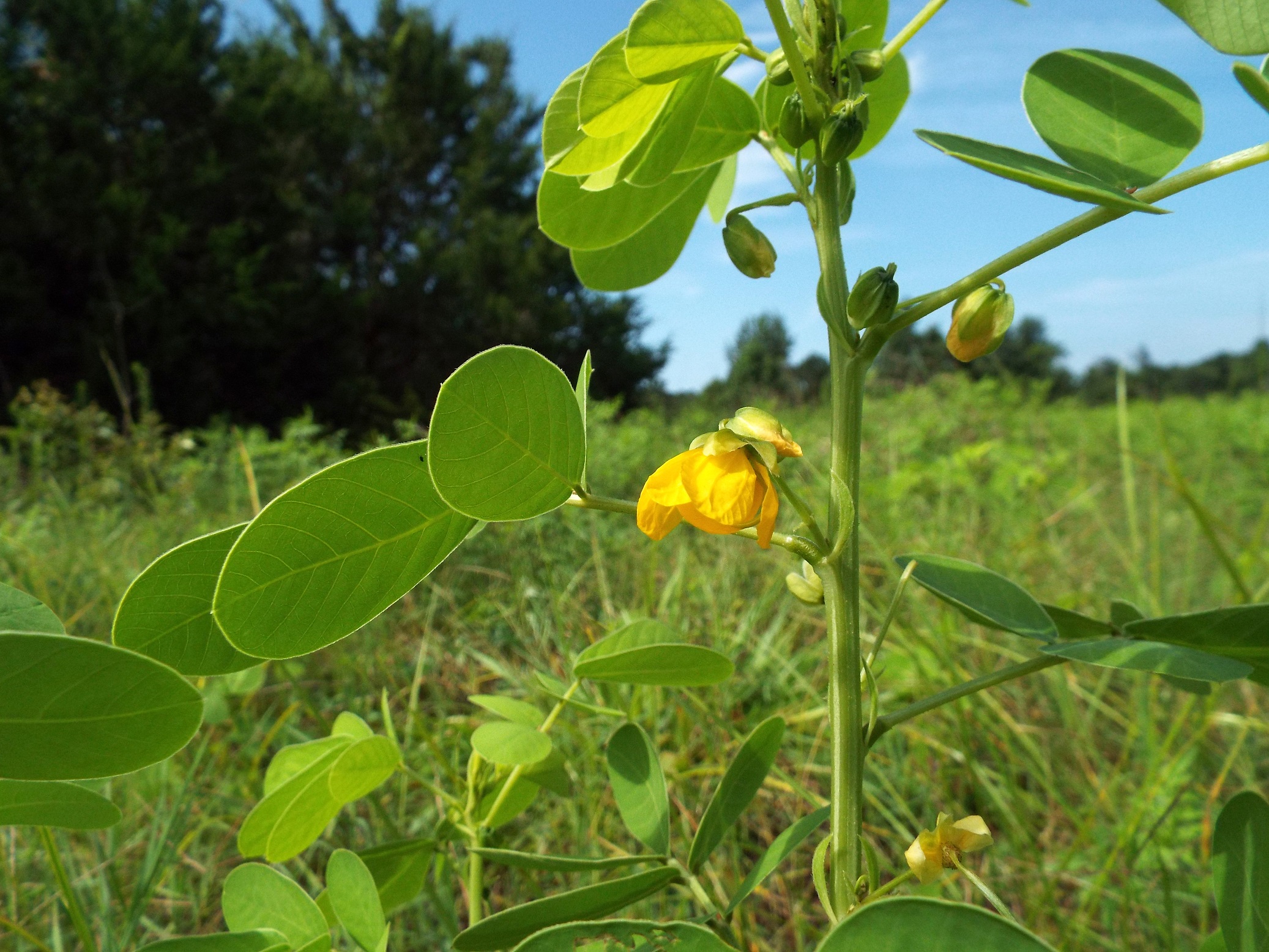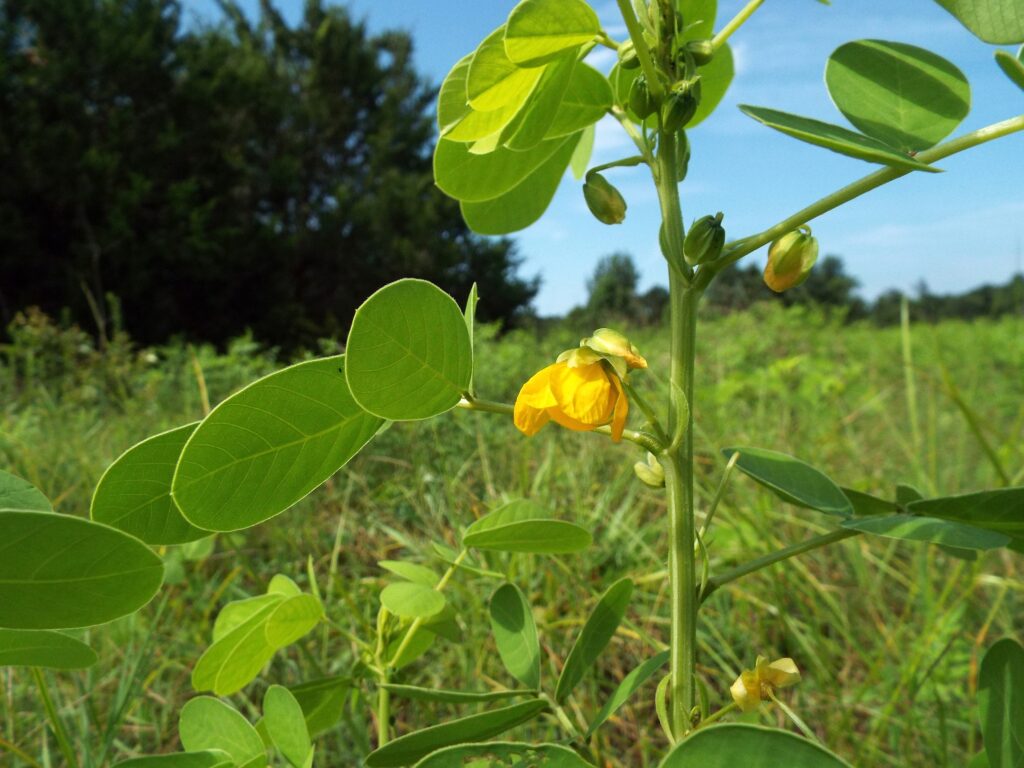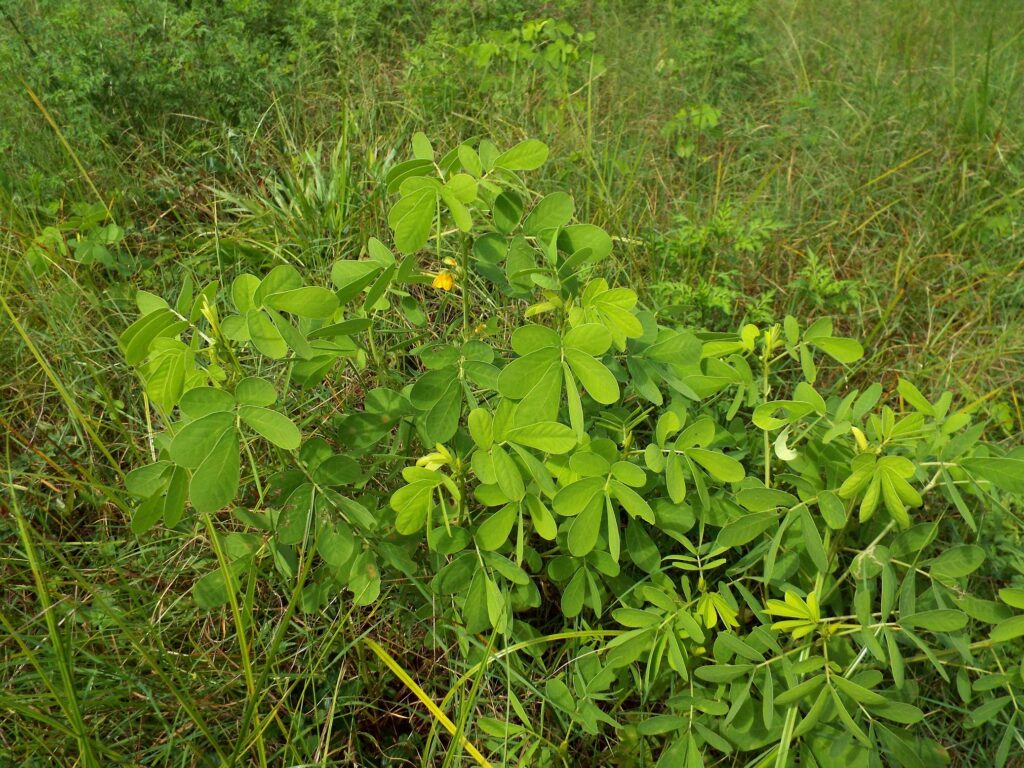



For Flora and Fauna Friday this week, it’s yet another plant. We’re taking a close look at Sicklepod (Senna obtusifolia). You may also know Sicklepod and its relatives as Cassia, which is the genus they formerly belonged to.
Sicklepod is a native, annual, herbaceous plant in the family Fabaceae, the Legumes. The same family as beans and peas. Like most Legumes, it can fix nitrogen from the air and loves sunlight. It grows best in full sun and in disturbed habitats, such as roadsides, fallow fields, and clear cuts. But, it will grow just about anywhere as long as it gets enough sunlight. It can grow up to 6ft tall in ideal conditions but is usually closer to 3ft. It has compound leaves divided into 6 teardrop-shaped leaflets. It blooms in late summer throughout the fall. The flower is yellow, bowl shaped, usually downward facing, and not particularly showy.
Sicklepod gets its common name from its fruit. The fruit’s shape is reminiscent of a sickle’s blade: long, thin, and curved. The fruit is a pod that’s packed with small, cube-shaped seeds. The plant disperses these seeds through its fruit. When dry, the pods will explosively split, scattering seeds for several feet. The technical term is “explosive dehiscense” and is a common form of seed dispersal for many Legumes.
Sicklepod is what most people call a weed: something that grows where you don’t want it to. However, calling a plant a weed or pest is really a relative term. Whereas something like the term invasive is an absolute, referring to any non-native plant that has a consistent and measurable negative impact on a native ecosystem. What makes a plant “weedy” all depends on what you’re trying to accomplish.
Sicklepod, from my perspective as an ecologist, is a fantastic native plant. It can grow almost everywhere, it requires almost no upkeep to maintain a population, it adds nitrogen to the soil, and, most importantly to me, it is a great source of nectar for pollinators and a larval host plant for several species of butterfly. Sicklepod is a major host for the caterpillars of the Sleepy Orange and the Cloudless Sulphur butterflies. The adults will also nectar on its flowers.
One man’s trash is another man’s treasure and one gardener’s weed is another’s centerpiece. It only depends on your perspective.